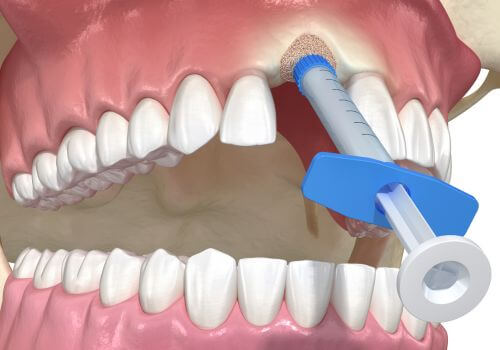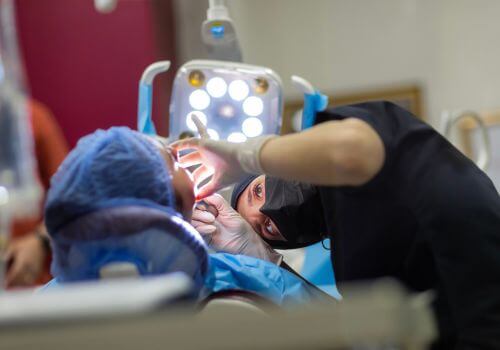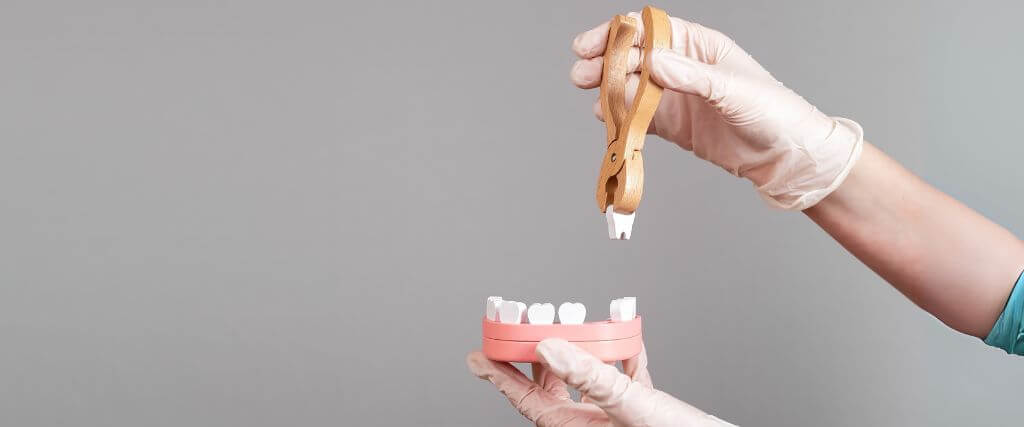Picture this: you’ve just had a tooth removed and feel a sense of relief now that the hardest part is over. Then your dentist brings up something called a “bone graft.” Suddenly, what felt like a simple procedure seems more complicated—and you’re left wondering if this extra step is really necessary.
That reaction is completely normal. Many patients have questions when bone grafts enter the conversation. After all, no one likes the idea of more treatment, especially when they’re still adjusting to the idea of losing a tooth.
As dental professionals, we understand your concerns. That’s why we’ve created this guide—to explain what a bone graft is, why it’s sometimes recommended after an extraction, and how it can benefit your long-term oral health.
What Is a Dental Bone Graft?
A dental bone graft is a type of surgery that takes place following an extraction. During the procedure, an oral surgeon replaces missing bone with material from another part of your body or with synthetic material. After a tooth extraction, the jawbone often shrinks in width and height in a process called resorption.
Think of the grafting material as a framework for new bone growth. Over time, your body regenerates bone to replace the graft material, increasing jaw volume and density.

Why Might You Need a Bone Graft After an Extraction?
There are several reasons your dentist may recommend a bone graft following tooth removal:
Preserving Bone Structure
After an extraction, the bone that once supported the tooth no longer receives stimulation from chewing. Without stimulation, the bone deteriorates. A bone graft helps maintain the bone volume and shape of your jaw.
Planning for Dental Implants
Sufficient bone is essential if you’re considering a dental implant to replace your extracted tooth. Implants need solid bone for stability and support, and a bone graft creates an adequate foundation.
As dental professionals, we often recommend socket preservation grafts immediately after extraction when a patient plans to get an implant later. This proactive approach typically saves time and reduces the need for more extensive grafting procedures down the road.
Preventing Facial Structure Changes
Significant bone loss can alter your facial appearance, creating a sunken look that makes you look older. Grafting helps prevent these changes by maintaining proper facial contours.
Support for Adjacent Teeth
When bone deterioration occurs after an extraction, neighboring teeth may shift or become unstable due to the loss of support. A bone graft helps prevent these problems.
Types of Bone Grafts Used After Tooth Extraction
Types of Bone Grafting Materials
Dental professionals use a variety of bone grafting materials, each offering unique benefits. Your dental team will recommend the most appropriate option based on your individual needs and treatment goals.
-
Autografts: This type of graft uses bone from your own body—commonly from the hip, chin, or back of the jaw. Since the tissue is your own, autografts offer excellent healing potential and integration with the surrounding bone.
-
Allografts: Sourced from human tissue donors, allografts are thoroughly screened, processed, and sterilized to ensure safety. They provide a reliable alternative when harvesting your own bone isn't ideal.
-
Xenografts: Derived from non-human sources, most commonly bovine (cow) bone, xenografts retain only the mineral structure after all organic material has been removed. They serve as a strong framework for your body to build new bone.
-
Synthetic Grafts: These grafts are made from biocompatible materials such as calcium phosphate or calcium sulfate. Synthetic options help stimulate bone growth and eliminate concerns about disease transmission or donor tissue.

The Bone Grafting Procedure
Understanding what happens during and after a bone graft can help ease any anxiety about the procedure. Grafting typically occurs immediately after tooth extraction while the socket is exposed.
During a bone graft, your dentist will:
- Clean the extraction site thoroughly.
- Place the grafting material into the socket.
- Cover the graft with a protective membrane.
- Close the gum tissue with stitches.
The entire process usually adds just a few minutes to the extraction procedure.
While recovering from your bone graft, you can expect mild discomfort, swelling, and bruising. These should resolve within a few days. In addition, small bone particles may work their way out through the gum tissue while you heal. This is normal. Complete healing and integration take 3-6 months for most patients, though exact times may vary.
Your dentist will provide aftercare instructions, including how to clean the area, what foods to avoid, and when to schedule follow-up appointments. Following these instructions closely ensures prompt healing and minimizes the risk of complications. If you have any concerns during recovery, contact your dentist right away.
Potential Risks and Complications
While bone grafting is generally safe, potential complications include:
Infection
Though rare with proper technique and sterilization protocols, infection remains possible with any surgical procedure.
Graft Failure
Sometimes, the body doesn’t integrate the graft material properly, resulting in graft failure. This complication is most common in patients who smoke or have certain medical conditions.
Nerve Damage
In very rare cases, bone grafting can cause nerve damage, causing numbness or tingling of the mouth or face.
Sinus Complications
For upper jaw grafts near the sinus cavity, there’s a small risk of sinus membrane perforation.
Do You Need a Dental Bone Graft?
Getting a bone graft after a tooth extraction is an investment in your oral health. While not necessary in every situation, it offers significant benefits for many patients, especially those considering implants or concerned about preserving facial structure. Your dentist will assess your unique situation and help you determine whether a bone graft would support your oral health goals. When performed by qualified professionals, bone grafts have high success rates and can significantly improve outcomes following tooth extraction. Proper aftercare is also vital to ensure proper healing.
Bone grafting may sound scary, but realistically, it usually only adds a few minutes to an extraction. If you need an extraction, schedule a consultation with your dentist today!

